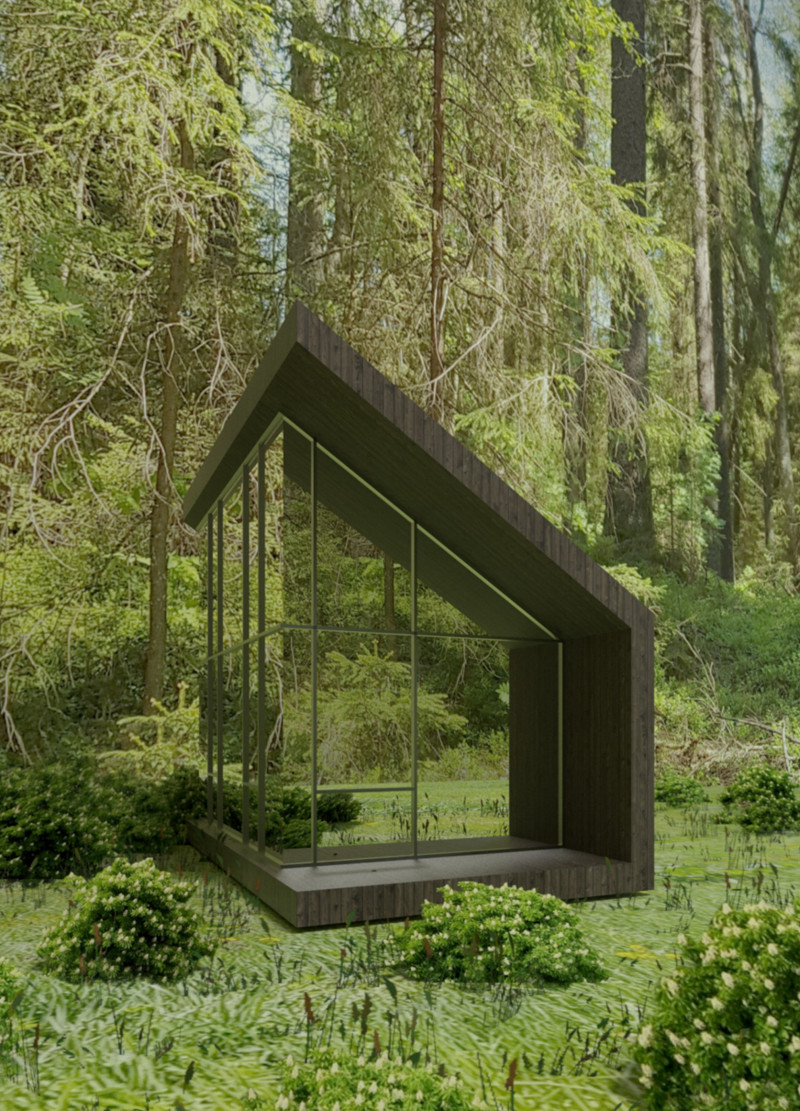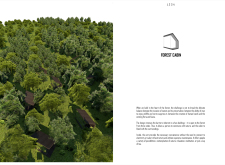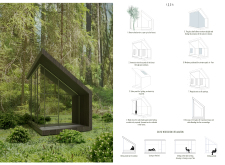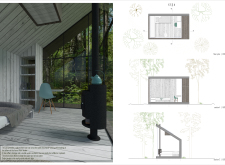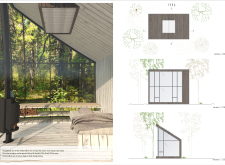5 key facts about this project
Functionally, the Forest Cabin is conceived as a retreat for relaxation, creativity, and self-sufficiency. It aims to provide its occupants with a space that fosters reflection and connection while minimizing reliance on conventional infrastructure. The layout incorporates flexible areas, allowing for various activities—from leisure and introspection to artistic endeavors. The design emphasizes an open plan that maximizes natural light and airflow, enhancing the occupants' experience of the surrounding wooded area.
One of the cabin's most notable features is its extensive use of glass in the facade, promoting a conversation between indoor and outdoor environments. This intentional design choice allows for uninterrupted views of the forest, immersing occupants in its sights and sounds. The large glass panels not only illuminate the interior but also create a sense of transparency that enhances the occupants' connection to their surroundings. The strategic placement of windows ensures optimal natural light during the day while allowing for seamless ventilation.
Sustainability is a core aspect of the Forest Cabin's design approach. The project incorporates renewable energy sources such as solar panels, which support the cabin's power needs. This commitment to energy independence is reinforced by the use of natural materials, primarily wood, which resonates with the cabin's woodland site. The design also encourages residents to utilize local resources, such as sourcing firewood for heating, fostering a respect for nature and its offerings. This thoughtful approach to materiality not only emphasizes aesthetic warmth but also aligns with principles of ecological stewardship.
The architectural composition of the cabin is characterized by a minimalist aesthetic that echoes traditional log cabins while embracing contemporary design elements. The structure is enclosed yet offers an open feel, effectively blurring the boundaries between interior spaces and the exterior environment. Unique elements such as mosquito-netted openings allow for fresh air circulation while maintaining comfort, demonstrating a nuanced understanding of climate and ecological context. Additionally, the use of one-way mirror glass confers privacy without obstructing the captivating views, presenting a careful balance of seclusion and immersion.
The Forest Cabin is a testament to thoughtful architecture that seeks to harmonize with its natural environment. Each design element, from the choice of materials to the flexible living spaces, plays a role in cultivating a serene retreat for its inhabitants. The project exemplifies a modern architectural ideology that values sustainability, user experience, and respect for nature. For those interested in delving deeper into the intricacies of the Forest Cabin project, exploring architectural plans, sections, and design details will provide valuable insights into how this project effectively navigates the interplay between architecture and environment. Embrace the opportunity to engage with the architectural ideas presented and witness how innovative approaches can transform the experience of living within nature.


